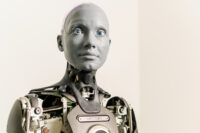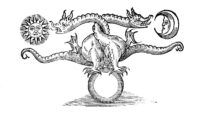We place a great deal of faith in eyewitness testimony and its impact on criminal justice is enormous. Eyewitness accounts can vary widely, however, as has been the case in the shooting death of Michael Brown in Ferguson, Missouri by a young police officer. Declining to bring charges, the Grand Jury heard conflicting stories from a large number of eyewitnesses, ultimately concluding that the officer in question should not be charged.
Our reliance on eyewitnesses to a crime ultimately depends upon who among the witnesses is most credible. That credibility can be based upon appearance, comfort while testifying, personal history, way of speaking; in short, when eyewitness accounts vary, the veracity of such witnesses assumes ascendancy.
Ironically, of all forms of testimony eyewitness testimony has been shown to be often unreliable. For many eyewitnesses, it’s not a matter of lying or making things up; they really believe that what they have seen and recounted is the truth and their testimony reflects that. However, just as a good illusionist relies on the ways the eye can be fooled, so too do eyewitnesses get fooled, but by their own senses.
Consider blinking, for example. When we blink we cannot see, yet the continuity of sight seems to be unbroken.; the brain fills in what what we miss. We can even play catch and not lose sight of a moving ball even though we blink. This mechanism clearly has survival qualities; if it were otherwise our experience of sight would be constantly interrupted making us less able to react to quick situations. And then there is what we call “mistaken appearance,” confusing one object for another. A popular example of this is mistaking a rope for a snake, but the same mechanism happens in mistaking a cell phone for a gun. Finally, there is the effect of “anticipated outcomes,” the method often employed by a magician. Our minds and senses are trained to expect that a particular cause generates a particular effect. So powerful is this mechanism of habitual mind that we think we see what we actually don’t, and do not see visible somethings which happen at all. Again, it’s a perfectly natural development in creatures which anticipate outcomes in order to survive, but it also distorts perception.
Our criminal justice system relies on “effective cause,” one of four types of causality identified long ago by Aristotle. Effective cause conforms to our reliance on what can be seen or heard and meshes well with assigning blame or responsibility, but it is also the simplest and most limited of causal relationships. Accordingly, eyewitness testimony meets the criteria of effective cause in determining who or what is fault in a dispute. Nuances of what constitutes “reasonableness” or “credibility” affect who or what is entered into evidence as well as other rules of law, but eyewitness accounts are a critical element of jurisprudence.
In the classic drama “Twelve Angry Men” a jury attempts to reach a verdict in a murder case. In the end, what seemed solid eyewitness accounts become shaky as they are fully explored and the emotional states of the jurors are revealed; the suspect is found not guilty. When eyewitness accounts vary, as they do in the Michael Brown shooting, relying on effective cause is insufficient. In such cases the broader reality of causes must be examined; history and prior behavior, physical evidence, preceding and subsequent events, and motivation. Such deliberation is decidedly more complex, but ultimately approaches truer justice.





Be First to Comment